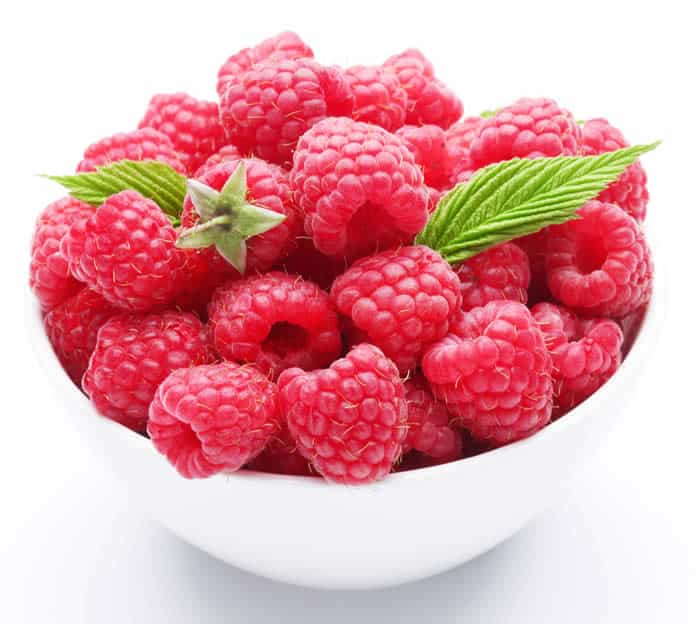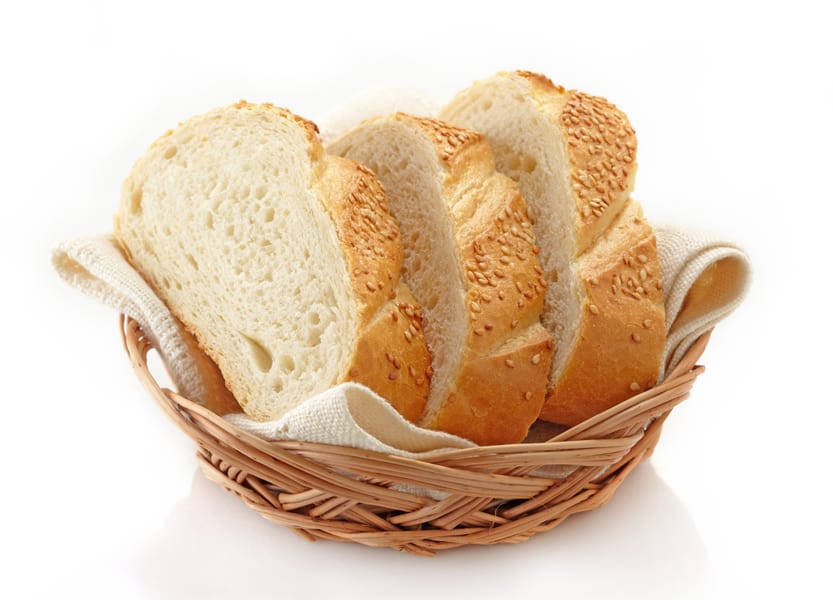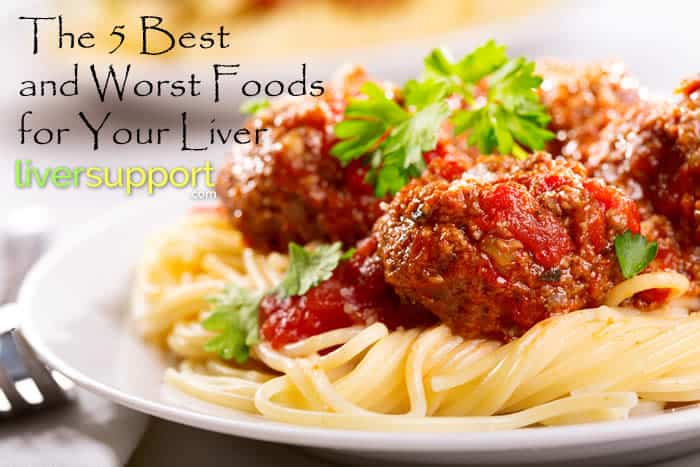
Previous
The Benefit Vitamin B May Have on Liver Disease

Next
A Potential Liver Disease Treatment That Involves Magnesium and Its Protein Transporter
The 5 Best and Worst Foods for Your Liver
Food can either help your liver function, or make it work harder. Find out some of the best and worst foods for your liver.
Your liver is vital to your body’s health. It’s responsible for processing nutrients from food, building proteins, excreting toxins, and making bile for food digestion. Anything that is eaten or consumed, whether it is food, medicine, toxins, or beverages, gets filtered by your liver. It stores vitamins, minerals, and even carbohydrates.
Food can either help your liver function…or make it work harder, causing stress on this vital organ.
The 5 Best Foods for Your Liver
Research points to several foods that can help your liver function by adding vital components to healthy liver metabolism.
Some of these foods are listed below:
1. Water
Your liver needs water to flush out toxins from the body. Yes, water is a food vital to the body’s function, performance, and energy levels. Water should be filtered, not tap, and stay away from water in plastic bottles due to the Bisphenol-A (BPA). How much water you need is an individualized concept. The best way to tell if you are hydrated is the color of your urine. A dark color means you need more fluid. (1)
2. High Fiber Foods
Foods such as oatmeal and whole grains help suppress liver inflammation by keeping the liver low in inflammatory chemicals. Dietary fiber may prevent or even cure liver fibrosis. (1,2)
3. Leafy Greens
Foods like broccoli and spinach can boost the antioxidant levels of glutathione. Glutathione is essential for the detoxification cycle in the liver. Furthermore, greens like broccoli have been shown to prevent the buildup of fat in the liver. And eating more greens can provide needed antioxidant vitamins such as A, C, and E. (3)
4. Berries

Berries are high in polyphenols that may help protect you against nonalcoholic fatty liver disease (NAFLD), often associated with obesity and high cholesterol. The most recent research in 2021 suggests the potential of using polyphenols to treat insulin resistance, oxidative stress, and inflammation present in the progression of liver disease. (4)
5. Coffee
Yes, our morning wake-up may help our liver function. Studies show that coffee drinkers with fatty liver disease have less liver damage than those who do not indulge in caffeinated drinks. Caffeine appears to lower abnormal liver enzymes in people at risk for liver diseases. Coffee is also an antioxidant with significant levels of potassium and magnesium in it. Two cups of coffee per day need to be consumed to show its beneficial effects. Recent research shows coffee drinkers experience a lower incidence of advanced cirrhosis and fibrosis. (5)
The 5 Worst Foods for Your Liver
Just like foods can heal or help your liver, some foods can harm your liver’s functioning and even kill off liver cells.
Some of these foods are:
1. Alcohol
According to the most recent National Survey on Drug Use and Health, 86.4 percent of those people ages 18 or older reported drinking alcohol. Fatty liver is present in 90-100 percent of those who drink heavily. Alcohol remains the second most frequent factor involved in liver cirrhosis after hepatitis C in the United States. Even occasional binge drinking can be harmful. (1,6)
2. Red Meat
We know that foods high in saturated fat are not suitable for the liver in general. However, studies have shown a significant association between red meat consumption specifically. And a recent study demonstrated a relationship between red meat intake and the development of NAFLD. (7)
3. Sugar
Insulin resistance is a cornerstone of nonalcoholic fatty liver disease. Sugar increases insulin resistance and may lead to obesity when consumed in excess. Low carbohydrate/high protein diets have been associated with a better metabolic profile in people predisposed to liver disease. Sugar is a refined carbohydrate devoid of fiber and is a significant contributor of fructose, a type of dietary sugar strongly associated with NAFLD. One study suggests that fructose may promote NALFD by adversely affecting the intestinal barrier and causing liver inflammation. Furthermore, the liver converts sugar into fat. (3,8)
4. Salt
High levels of sodium can lead to liver fibrosis. Sodium is exceptionally high in processed foods and canned goods. (3)
5. White Bread, Rice, and Pasta

These are all refined carbohydrates typical of a Western Diet and associated with NAFLD. Refined carbohydrates turn into sugar rapidly in the bloodstream. The high insulin levels that develop in our blood after eating refined carbohydrates lead to fat accumulation in the liver. (9)
Conclusion
In conclusion, eat to heal your liver and protect it from harmful foods that may damage it.
- 14 Best and Worst Foods for Your Liver. Web MD. Retrieved on 2/19/21 from https://www.webmd.com/hepatitis/ss/slideshow-best-and-worst-foods-for-your-liver
- Ming-mei, Li, Zhou, Yan, Zuo, Luo, Nie, Dan and Li, Xiao. 2020. Dietary fiber regulates intestinal flora and suppresses liver and systemic inflammation to alleviate liver fibrosis in mice. Nutrition. 81, Retrieved from https://www.sciencedirect.com/science/article/abs/pii/S0899900720302422
- Salehi-sahlabadi, Ammar, Sadat, Samaneh, Beigrezael, S, Pourmasomi, Makan, Feizi, Awai, Ghiasvand, Reza, Hadi, Amir, Cain, C.T. Clark, and Miraghajani, Maryam. 2021. Dietary patterns and risk of nonalcoholic fatty liver disease. BMC. 21(41), Retrieved from https://bmcgastroenterol.biomedcentral.com/articles/10.1186/s12876-021-01612-z
- Miller, Evelyn. 2020. Nutrition management strategies for nonalcoholic fatty liver disease: treatment and prevention. Clinical Liver Disease. 15(4), Retrieved from https://www.ncbi.nlm.nih.gov/pmc/articles/PMC7206319/
- Ergin, Erhan, Tokusoglu, Ozlem, and Vural, Halil. 2021. Coffee toxicology, processing of the coffee, and liver diseases (is it a miracle of nature?). Institute of Food Science and Technology. Retrieved from https://doi.org/10.1111/jfpp.15243
- Liver Disease Statistics. American Liver Foundation. Retrieved 2/20/21 from https://liverfoundation.org/liver-disease-statistics/#alcohol-related-liver-disease-and-cirrhosis
- Lahelma, Mari, Luukkonen, Panu, Qadri, Sami, Ahloholm, Noora, Lallukka-Bruck, Susanna, Porthan, Kimmo, and Jyki-Jarvinen, Hannele. 2021. Assessment of lifestyle factors helps to identify liver fibrosis due to nonalcoholic fatty liver disease in obesity. Nutrients. 13(1), Retrieved from https://www.mdpi.com/2072-6643/13/1/169
- How High Fructose May Trigger Fatty Liver Disease. (2020, September 15). National Institutes of Health. Retrieved 2/20/21 from https://www.nih.gov/news-events/nih-research-matters/how-high-fructose-intake-may-trigger-fatty-liver-disease#:~:text=Studies%20suggest%20that%20high%20fructose%20intake%20may%20increase,a%20more%20aggressive%20disease%20called%20non-alcoholic%20steatohepatitis%20%28NASH%29
- Miller, Evelyn. 2020. Nutrition management strategies for nonalcoholic fatty liver disease: treatment and prevention. Clinical Liver Disease. 15(4), Retrieved from https://www.ncbi.nlm.nih.gov/pmc/articles/PMC7206319/






